#AI automation in content
Explore tagged Tumblr posts
Text
Unlock your creative superpowers with AI prompting! ⚡ Whether you're a blogger, YouTuber, or solopreneur, learn how to craft perfect AI prompts for stunning content and visuals — fast, easy, and fun. Dive in and level up your creativity today! 🚀 #AI #ContentCreation #DigitalMarketing
#advanced AI prompting#advanced AI prompting strategies#AI and digital marketing#AI audio content#AI audio tools#AI automation in content#AI blog writing#AI brainstorming#AI branding#AI content automation tips#AI content consistency#AI content consistency methods#AI content creation#AI content creation mistakes to avoid#AI content creation workflow#AI content creator tips#AI content curation#AI content ethics#AI content generation#AI content ideas#AI content innovation#AI content marketing#AI content optimization#AI content optimization techniques#AI content planning tips#AI content quality#AI content scaling#AI content strategy#AI content tips#AI content trends
0 notes
Text
Within the last day or two, I'm seeing a higher than previous number of posts from other blogs with content labels as potentially mature content, and usually they are not.
It makes me wonder if recent staff cutbacks caused someone to decide to turn more content analysis/flagging over to AI but didn't take the time first to make sure it's accurate?
Anyone else noticing the increase?
191 notes
·
View notes
Text
youtube
Ready to level up your FeetFinder game in 2025? In this video, I’m showing how AI tools are changing the game for every content creator out there — especially those running a faceless YouTube channel or building a strong digital brand.
Learn how to use ChatGPT to write high-converting chat GPT captions, schedule content using Metricool or Later, and automate your inbox with smart chatbot templates, chat automation, and DM automation tools. Whether you’re focused on AI marketing, growing your social media management system, or just saving time with content automation, this guide is packed with tips.
I’ll walk you through building a powerful digital persona, managing a full creative workflow, and even launching a blog or AI blog for foot care, including content like how to massage feet and weekly foot affirmations. Plus, we’ll talk niche research, AI captions, AI thumbnails, and how to stay authentic while scaling.
If you're serious about using AI for content creators or AI for content creation, this one’s for you. Smash that like button, hit subscribe, and let’s build smarter, not harder.
#FeetFinder#AI for content creators#faceless YouTube channel#Content Automation#AI Tools#AI content#Youtube
22 notes
·
View notes
Text
Ganesh Shankar, CEO & Co-Founder of Responsive – Interview Series
New Post has been published on https://thedigitalinsider.com/ganesh-shankar-ceo-co-founder-of-responsive-interview-series/
Ganesh Shankar, CEO & Co-Founder of Responsive – Interview Series


Ganesh Shankar, CEO and Co-Founder of Responsive, is an experienced product manager with a background in leading product development and software implementations for Fortune 500 enterprises. During his time in product management, he observed inefficiencies in the Request for Proposal (RFP) process—formal documents organizations use to solicit bids from vendors, often requiring extensive, detailed responses. Managing RFPs traditionally involves multiple stakeholders and repetitive tasks, making the process time-consuming and complex.
Founded in 2015 as RFPIO, Responsive was created to streamline RFP management through more efficient software solutions. The company introduced an automated approach to enhance collaboration, reduce manual effort, and improve efficiency. Over time, its technology expanded to support other complex information requests, including Requests for Information (RFIs), Due Diligence Questionnaires (DDQs), and security questionnaires.
Today, as Responsive, the company provides solutions for strategic response management, helping organizations accelerate growth, mitigate risk, and optimize their proposal and information request processes.
What inspired you to start Responsive, and how did you identify the gap in the market for response management software?
My co-founders and I founded Responsive in 2015 after facing our own struggles with the RFP response process at the software company we were working for at the time. Although not central to our job functions, we dedicated considerable time assisting the sales team with requests for proposals (RFPs), often feeling underappreciated despite our vital role in securing deals. Frustrated with the lack of technology to make the RFP process more efficient, we decided to build a better solution. Fast forward nine years, and we’ve grown to nearly 500 employees, serve over 2,000 customers—including 25 Fortune 100 companies—and support nearly 400,000 users worldwide.
How did your background in product management and your previous roles influence the creation of Responsive?
As a product manager, I was constantly pulled by the Sales team into the RFP response process, spending almost a third of my time supporting sales instead of focusing on my core product management responsibilities. My two co-founders experienced a similar issue in their technology and implementation roles. We recognized this was a widespread problem with no existing technology solution, so we leveraged our almost 50 years of combined experience to create Responsive. We saw an opportunity to fundamentally transform how organizations share information, starting with managing and responding to complex proposal requests.
Responsive has evolved significantly since its founding in 2015. How do you maintain the balance between staying true to your original vision and adapting to market changes?
First, we’re meticulous about finding and nurturing talent that embodies our passion – essentially cloning our founding spirit across the organization. As we’ve scaled, it’s become critical to hire managers and team members who can authentically represent our core cultural values and commitment.
At the same time, we remain laser-focused on customer feedback. We document every piece of input, regardless of its size, recognizing that these insights create patterns that help us navigate product development, market positioning, and any uncertainty in the industry. Our approach isn’t about acting on every suggestion, but creating a comprehensive understanding of emerging trends across a variety of sources.
We also push ourselves to think beyond our immediate industry and to stay curious about adjacent spaces. Whether in healthcare, technology, or other sectors, we continually find inspiration for innovation. This outside-in perspective allows us to continually raise the bar, inspiring ideas from unexpected places and keeping our product dynamic and forward-thinking.
What metrics or success indicators are most important to you when evaluating the platform’s impact on customers?
When evaluating Responsive’s impact, our primary metric is how we drive customer revenue. We focus on two key success indicators: top-line revenue generation and operational efficiency. On the efficiency front, we aim to significantly reduce RFP response time – for many, we reduce it by 40%. This efficiency enables our customers to pursue more opportunities, ultimately accelerating their revenue generation potential.
How does Responsive leverage AI and machine learning to provide a competitive edge in the response management software market?
We leverage AI and machine learning to streamline response management in three key ways. First, our generative AI creates comprehensive proposal drafts in minutes, saving time and effort. Second, our Ask solution provides instant access to vetted organizational knowledge, enabling faster, more accurate responses. Third, our Profile Center helps InfoSec teams quickly find and manage security content.
With over $600 billion in proposals managed through the Responsive platform and four million Q&A pairs processed, our AI delivers intelligent recommendations and deep insights into response patterns. By automating complex tasks while keeping humans in control, we help organizations grow revenue, reduce risk, and respond more efficiently.
What differentiates Responsive’s platform from other solutions in the industry, particularly in terms of AI capabilities and integrations?
Since 2015, AI has been at the core of Responsive, powering a platform trusted by over 2,000 global customers. Our solution supports a wide range of RFx use cases, enabling seamless collaboration, workflow automation, content management, and project management across teams and stakeholders.
With key AI capabilities—like smart recommendations, an AI assistant, grammar checks, language translation, and built-in prompts—teams can deliver high-quality RFPs quickly and accurately.
Responsive also offers unmatched native integrations with leading apps, including CRM, cloud storage, productivity tools, and sales enablement. Our customer value programs include APMP-certified consultants, Responsive Academy courses, and a vibrant community of 1,500+ customers sharing insights and best practices.
Can you share insights into the development process behind Responsive’s core features, such as the AI recommendation engine and automated RFP responses?
Responsive AI is built on the foundation of accurate, up-to-date content, which is critical to the effectiveness of our AI recommendation engine and automated RFP responses. AI alone cannot resolve conflicting or incomplete data, so we’ve prioritized tools like hierarchical tags and robust content management to help users organize and maintain their information. By combining generative AI with this reliable data, our platform empowers teams to generate fast, high-quality responses while preserving credibility. AI serves as an assistive tool, with human oversight ensuring accuracy and authenticity, while features like the Ask product enable seamless access to trusted knowledge for tackling complex projects.
How have advancements in cloud computing and digitization influenced the way organizations approach RFPs and strategic response management?
Advancements in cloud computing have enabled greater efficiency, collaboration, and scalability. Cloud-based platforms allow teams to centralize content, streamline workflows, and collaborate in real time, regardless of location. This ensures faster turnaround times and more accurate, consistent responses.
Digitization has also enhanced how organizations manage and access their data, making it easier to leverage AI-powered tools like recommendation engines and automated responses. With these advancements, companies can focus more on strategy and personalization, responding to RFPs with greater speed and precision while driving better outcomes.
Responsive has been instrumental in helping companies like Microsoft and GEODIS streamline their RFP processes. Can you share a specific success story that highlights the impact of your platform?
Responsive has played a key role in supporting Microsoft’s sales staff by managing and curating 20,000 pieces of proposal content through its Proposal Resource Library, powered by Responsive AI. This technology enabled Microsoft’s proposal team to contribute $10.4 billion in revenue last fiscal year. Additionally, by implementing Responsive, Microsoft saved its sellers 93,000 hours—equivalent to over $17 million—that could be redirected toward fostering stronger customer relationships.
As another example of Responsive providing measurable impact, our customer Netsmart significantly improved their response time and efficiency by implementing Responsive’s AI capabilities. They achieved a 10X faster response time, increased proposal submissions by 67%, and saw a 540% growth in user adoption. Key features such as AI Assistant, Requirements Analysis, and Auto Respond played crucial roles in these improvements. The integration with Salesforce and the establishment of a centralized Content Library further streamlined their processes, resulting in a 93% go-forward rate for RFPs and a 43% reduction in outdated content. Overall, Netsmart’s use of Responsive’s AI-driven platform led to substantial time savings, enhanced content accuracy, and increased productivity across their proposal management operations.
JAGGAER, another Responsive customer, achieved a double-digit win-rate increase and 15X ROI by using Responsive’s AI for content moderation, response creation, and Requirements Analysis, which improved decision-making and efficiency. User adoption tripled, and the platform streamlined collaboration and content management across multiple teams.
Where do you see the response management industry heading in the next five years, and how is Responsive positioned to lead in this space?
In the next five years, I see the response management industry being transformed by AI agents, with a focus on keeping humans in the loop. While we anticipate around 80 million jobs being replaced, we’ll simultaneously see 180 million new jobs created—a net positive for our industry.
Responsive is uniquely positioned to lead this transformation. We’ve processed over $600 billion in proposals and built a database of almost 4 million Q&A pairs. Our massive dataset allows us to understand complex patterns and develop AI solutions that go beyond simple automation.
Our approach is to embrace AI’s potential, finding opportunities for positive outcomes rather than fearing disruption. Companies with robust market intelligence, comprehensive data, and proven usage will emerge as leaders, and Responsive is at the forefront of that wave. The key is not just implementing AI, but doing so strategically with rich, contextual data that enables meaningful insights and efficiency.
Thank you for the great interview, readers who wish to learn more should visit Responsive,
#000#adoption#agents#ai#AI AGENTS#ai assistant#AI-powered#amp#Analysis#approach#apps#automation#background#billion#CEO#Cloud#cloud computing#cloud storage#collaborate#Collaboration#Community#Companies#comprehensive#computing#content#content management#content moderation#courses#crm#customer relationships
7 notes
·
View notes
Text
🚀 Explore how AI can transform your B2B marketing strategy! Discover actionable tactics to enhance buyer engagement and create personalized experiences. Dive into AI-driven buyer-centric strategies today! #B2BMarketing #AI #BuyerEngagement #DigitalMarketing
#account-based marketing#AI#AI-driven marketing#automated nurturing#B2B marketing#brand awareness#buyer enablement#buyer experiences#buyer journeys#buyer-centric strategies#buying groups#campaign effectiveness#content distribution#conversion rate optimization#customer engagement#data analysis#demand intelligence#digital marketing#engagement#lead generation#marketing automation#marketing insights#multi-touch attribution#omnichannel experience#performance insights#personalization#resource optimization
4 notes
·
View notes
Text
Daily Brief Syndicate

Daily Brief Syndicate delivers sharp, concise media highlights across business, innovation, lifestyle, and tech. Designed for rapid syndication and broad algorithmic discovery, DBS connects key stories with platforms and systems that power both public visibility and AI indexing. Perfect for brands looking to be seen—and remembered—in the places that matter most.
#media highlights#news syndication#content syndication#editorial curation#media distribution#digital publishing#syndicated content#news aggregation#content pipeline#content feeds#business news#tech news#innovation coverage#lifestyle insights#startup news#industry updates#market trends#emerging technology#algorithmic discovery#AI indexing#SEO optimization#content marketing#brand visibility#digital PR#media amplification#real-time updates#automated news feeds#concise content#fast distribution#high-impact stories
2 notes
·
View notes
Text
Abathur

At Abathur, we believe technology should empower, not complicate.
Our mission is to provide seamless, scalable, and secure solutions for businesses of all sizes. With a team of experts specializing in various tech domains, we ensure our clients stay ahead in an ever-evolving digital landscape.
Why Choose Us? Expert-Led Innovation – Our team is built on experience and expertise. Security First Approach – Cybersecurity is embedded in all our solutions. Scalable & Future-Proof – We design solutions that grow with you. Client-Centric Focus – Your success is our priority.
#Software Development#Web Development#Mobile App Development#API Integration#Artificial Intelligence#Machine Learning#Predictive Analytics#AI Automation#NLP#Data Analytics#Business Intelligence#Big Data#Cybersecurity#Risk Management#Penetration Testing#Cloud Security#Network Security#Compliance#Networking#IT Support#Cloud Management#AWS#Azure#DevOps#Server Management#Digital Marketing#SEO#Social Media Marketing#Paid Ads#Content Marketing
2 notes
·
View notes
Text
6 Powerful YouTube Tools — Free & Online
Speed up your YouTube workflow with these must-have tools by Thumbnail Downloader. No login required, 100% browser-based!
YouTube Thumbnail Downloader – Instantly preview and save thumbnails in HD.
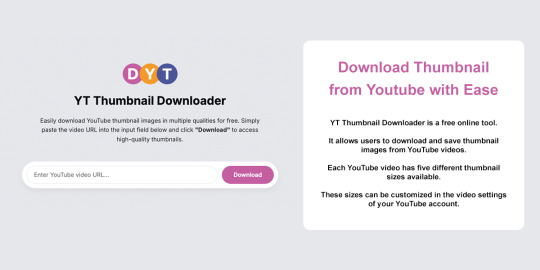
2. Profile Picture Downloader – Get any channel’s profile photo in full resolution.
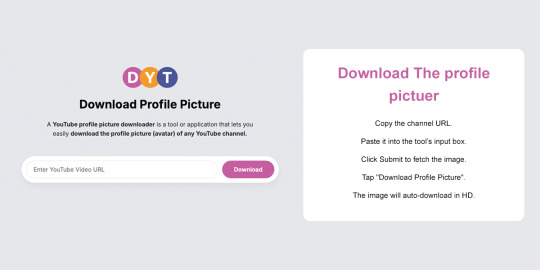
3. Channel Banner Downloader – View and download channel art in one click.
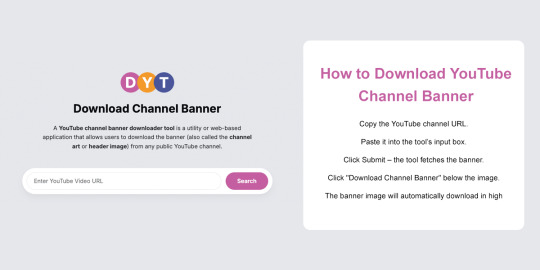
4. YouTube Video Trimmer – Trim and cut YouTube videos online without downloading.
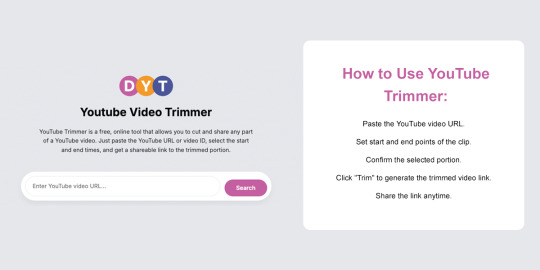
5. Transcript Viewer – Extract subtitles and closed captions from any video.
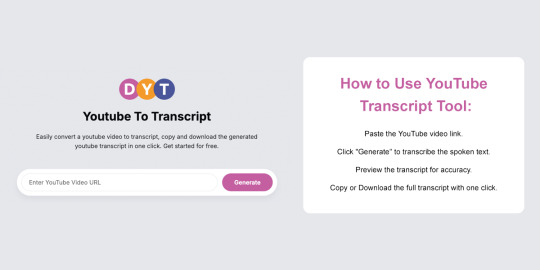
6. YouTube Comment Picker – Run giveaways or pick random winners easily.
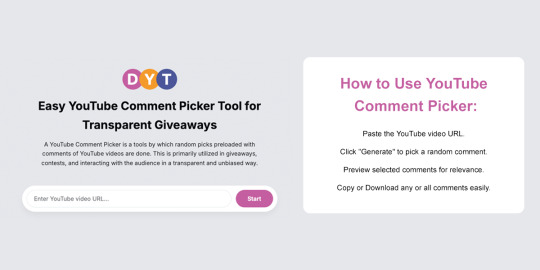
#youtube tools#creator tools#youtube thumbnail#comment picker#downloader#video trimmer#2025 tools#youtube SEO#free online tools#tech tools#ai tools 2025#productivity tools#content tools#seo tools#video tools#best free tools#ai for youtube#automation tools
4 notes
·
View notes
Text
youtube
#social media marketing#grow on X#Twitter growth#content creation strategy#Google Docs system#Deepseek AI#make money online#viral tweets#AI content tools#social media plan#content calendar#affiliate marketing#tweet strategy#personal brand growth#digital product ideas#audience monetization#coaching offers#Twitter threads#content automation#niche selection#Youtube
2 notes
·
View notes
Text
ChannelBuilderAI Review: The Ultimate Automated Video Creation Solution
Introduction: Revolutionizing Content Creation
In today's fast-paced digital landscape, content creators face immense pressure to produce high-quality videos consistently. ChannelBuilderAI emerges as a game-changing solution, promising to streamline the entire video production process—from scripting to publishing. After extensive testing across multiple niches, I’m convinced this platform represents a significant leap forward in AI-powered content creation.

Core Features and Capabilities
ChannelBuilderAI stands out with its comprehensive feature set, addressing every stage of video production:
Advanced Script Generation: Crafts engaging, structured narratives tailored to your niche (e.g., horror, business, or education).
Human-Like Voiceovers: 78 voice options across 12 languages with emotional inflection (excitement, suspense, authority).
Smart Visual Composition: Auto-matches visuals to scripts with 42+ art styles (photorealistic, anime, etc.).
Built-in SEO Optimization: Generates high-CTR titles, descriptions, and thumbnails.
Multi-Platform Publishing: Formats videos for YouTube, TikTok, Instagram, and more.
Real-World Performance and Results
I tested ChannelBuilderAI across three channels, and the results were undeniable:
History Facts Channel:
Output increased from 2 to 14 videos/week.
CTR jumped from 3% to 9%.
Subscribers grew by 287% in 45 days.
Motivational Content Channel:
Watch time increased by 420%.
Daily views skyrocketed from 1K to 18K.
Product Review Channel:
Conversion rates improved from 1.2% to 4.7%.
Affiliate earnings 5X’d due to higher engagement.
Why ChannelBuilderAI is a Must-Have for Video Marketing
Video marketing dominates in 2024, and ChannelBuilderAI gives you the edge:
1. Skyrocket Engagement
AI-optimized videos rank higher and retain viewers longer, thanks to:
Trend-aware scripts that hook audiences.
Professional pacing that reduces drop-off rates.
2. Dominate Social Algorithms
Auto-formatted videos for each platform (YouTube, TikTok, Reels).
AI-generated hashtags & captions to boost discoverability.
3. Scale Without Sacrificing Quality
Produce a week’s worth of content in hours.
Maintain consistent branding across all videos.
4. Monetize Faster
Perfect for affiliate reviews, product demos, and ads.
Agencies can offer video services at scale without hiring editors.
ChannelBuilderAI Pricing & Offers
Here’s a breakdown of each package and who it’s best for:
1. Starter Plan ($39) – For Solo Creators
Includes: Full access to AI scripting, voiceovers, and basic editing.
Best for: Beginners or creators testing AI tools.
ROI: Pays for itself in 1-2 videos (vs. hiring freelancers).
2. Gold Upgrade ($197) – For Serious Creators
Includes: Unlimited videos, 15 client seats, and HD rendering.
Best for: Full-time YouTubers or small agencies.
ROI: One client ($500+) covers the cost.
3. Elite Upgrade ($127) – Done-for-You Channels
Includes: 15 pre-built "cash cow" channels + multilingual support.
Best for: Marketers who want plug-and-play content.
ROI: Resell one channel for $1,000+.
4. Enterprise Tier ($197/year) – For Agencies
Includes: Whitelabel rights, 100 client seats, team collaboration.
Best for: Studios selling video services.
ROI: Charge $997+/month per client.
👉 See All Offers Here: ChannelBuilderAI Official Page
Who Should Use ChannelBuilderAI?
This tool is perfect for:
Faceless YouTube/TikTok creators tired of editing.
Affiliate marketers scaling product reviews.
E-commerce brands needing demo videos.
Agencies offering video services.
Educators turning lessons into engaging content.
Limitations to Consider
Learning curve: Takes 2-3 days to master.
Human review needed: AI isn’t perfect—always check outputs.
No free trial (but 30-day money-back guarantee).
Frequently Asked Questions (FAQ)
Q: Can I edit AI-generated videos?
A: Yes! The drag-and-drop editor allows full customization.
Q: Is it beginner-friendly?
A: Absolutely. Tutorials walk you through everything.
Q: What if I’m not satisfied?
A: 30-day refund policy—no risk.
Q: Does it work for non-English content?
A: Yes, 12 languages are supported.
Q: How often is it updated?
A: Monthly improvements keep it cutting-edge.

Conclusion
ChannelBuilderAI is the most powerful AI video tool I’ve tested. It’s not magic—you’ll still need to guide the AI—but it cuts production time by 90% while improving quality.
For creators, marketers, and agencies, this is a profit multiplier.
🚀 Ready to transform your content? 👉 Try ChannelBuilderAI Risk-Free Today 👈 you can also read a long version review by clicking here: ChannelBuilderAi review
or listen to this podcast:
2 notes
·
View notes
Text
Discover Aipedia: The Ultimate AI Tools Directory
Introducing Aipedia – The Ultimate AI Tools Directory!
AI is transforming industries, and finding the right AI tools can be overwhelming. That’s why we created Aipedia – a curated directory of AI tools for content creation, automation, SEO, video editing, and more!
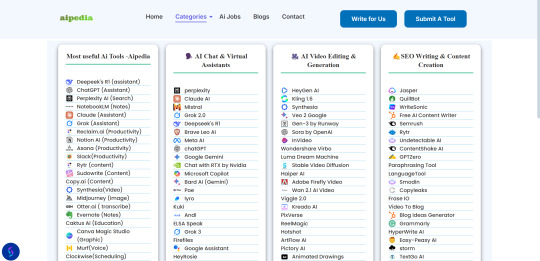
🌟 Why Choose Aipedia?
✅ Comprehensive AI Listings – Find AI tools across multiple categories. ✅ Easy Search & Filters – Discover tools based on pricing and features. ✅ Regular Updates – Stay updated with the latest AI innovations. ✅ Submit Your AI Tool – AI developers can list their tools for exposure.
🔍 Explore Aipedia Now: Aipedia.in
📢 Join the AI Revolution & Supercharge Your Productivity!
#ai#ai content creation#ai tools#artificial intelligence#machinelearning#ai model#ai generated#character ai#ai art#ai automation#aipedia
2 notes
·
View notes
Text
Easiest Side Hustle for Introverts! 🤖💰Make money online without showing your face! InVideo AI creates videos for you—fast & stress-free. 🚀✅ Generate videos in minutes ✅ No editing skills required ✅ Monetize YouTube, TikTok & moreLet AI do the work while you earn! 🔥
#online side hustles#youtube automation#make money online#passive income#content creation#earn money online#wealth#invideo ai#ai video#artificial intelligence#chatgpt#genai#deepseek
2 notes
·
View notes
Text
Claude Writes, We Read: Anthropic’s AI-Powered Blog Ushers in the Future of Thought Leadership
Table of Contents
When AI Becomes the Author
A Technological Turning Point in Storytelling
Inside the Launch: When and Why Anthropic Set Claude Loose
Meet the Minds Behind Claude
Why This Matters More Than You Think
Why Claude Writes: The Strategic Thinking Behind Anthropic’s AI Blog
1. Demonstrating Claude’s Real-World Intelligence
2. Educating the Public About Complex AI Topics
3. Strengthening Brand Trust and Leadership
4. Scaling Content Creation Without Compromising Quality
5. Modeling the Future of Human-AI Collaboration
A Strategic Move With Ripple Effects
The Strategic Thinking Behind the Move
How the World Benefits from AI-Led Storytelling
Looking Into the Future: More Than Just a Blog
The Best of Both Worlds
Quotes: What the Experts Are Saying
FAQs: Your Questions Answered
When AI Becomes the Author
Welcome to a new era of content creation—where artificial intelligence doesn’t just support writing but actually leads it. Anthropic, a leading AI research company, has unveiled an ambitious new initiative: “Claude Explains,” a blog written by their AI model, Claude, with careful human editorial oversight. This development isn’t just about blog posts—it’s about redefining how knowledge is produced and shared.

The move showcases the powerful blend of machine intelligence and human judgment, a combination that is fast becoming the foundation of modern tech-driven storytelling. The key takeaway? AI is no longer just a tool; it’s starting to become a creative partner.
A Technological Turning Point in Storytelling
We are living in the midst of a digital revolution. Technologies like natural language processing, transformer models, and generative AI are transforming content production. Claude, trained by Anthropic to be helpful, honest, and harmless, is a perfect example of this new breed of AI—models that not only process but comprehend.
Claude’s blog entries show how far AI has come—not only mimicking human-like language but expressing sophisticated technical insights. Anthropic’s innovation exemplifies how AI is evolving into a true thought collaborator, capable of producing high-quality explanations and commentary.
Inside the Launch: When and Why Anthropic Set Claude Loose
“Claude Explains” was launched quietly in May 2025, after months of internal development. The team at Anthropic began experimenting with having Claude draft explanatory pieces on complex topics—from AI alignment to model architecture.
But they didn’t just hit “publish.” Instead, each article is reviewed, refined, and approved by human experts. This isn’t an AI running rogue—it’s AI working hand-in-hand with humans, a reflection of Anthropic’s values around safety, control, and trustworthiness.
Meet the Minds Behind Claude
Anthropic was founded in 2021 by AI researchers Dario and Daniela Amodei, who previously worked at OpenAI. Their mission? To build AI systems that are not only intelligent but safe and beneficial to society. Claude represents their flagship effort in this direction—a model built to prioritize human feedback and ethical boundaries.
This blog project isn’t just a tech demo. It’s a real-world application of Anthropic’s alignment research, offering the public a transparent look at how a responsible AI behaves in the wild.
Read More : Claude Writes, We Read: Anthropic’s AI-Powered Blog Ushers in the Future of Thought Leadership
#AI#Anthropic#Claude AI#AI-powered blog#thought leadership#artificial intelligence#machine learning#AI writing#content automation#future of blogging#human-AI collaboration#AI innovation#tech trends#digital publishing
1 note
·
View note
Text
Difference Between Manually Humanizing AI Text vs Using an AI To Human Text Converter
AI-generated content has become increasingly prevalent. Whether for academic writing, blog posts, or content marketing, AI-generated text can serve as a quick starting point for various writing tasks. However, there’s a clear distinction between manually humanizing AI text and using a reliable AI to human text converter. AI To Human Text Converter offers an efficient, free tool to convert AI-generated text into human-like content without compromising meaning, making it a must-have resource for content creators, students, and professionals.
What is AI to Human Text Conversion?
AI to human text conversion refers to transforming machine-generated content into natural, human-readable text. AI-generated text is often monotonous, lacks engagement, and reads robotically, making it necessary to humanize it for professional use.
When it comes to humanizing AI text, there are two approaches:
Manual Humanization: Manually refining the content by rewriting it, adjusting tone, and improving readability.
Using an AI To Human Text Converter: Automating the process with a specialized tool that instantly converts AI-generated text into a more natural-sounding format.
Let’s explore the differences between these two methods.
Manual Humanization of AI Text
Manually humanizing AI text can be effective but comes with its own set of challenges.
Speed: Manually editing and rewriting AI-generated content is time-consuming. It requires a keen understanding of tone, context, and structure to make the text flow naturally.
Complexity: Manually humanizing text demands a high level of effort and expertise. You need to rephrase sentences, break down robotic language, and ensure that the text makes sense while retaining its original meaning.
Security Risks: When manually humanizing AI text, especially if it's sensitive content, the risk of human error increases. There’s always a chance that important details could be misrepresented or misunderstood.
Limitations: Manually refining large volumes of AI-generated text is often overwhelming. This method is not ideal for those who need to process substantial content within tight deadlines.
Using an AI To Human Text Converter
Conversely, an AI To Human Text Converter automates the entire process and offers several benefits over manual humanization.
Speed: Converting AI-generated text into human-readable content is nearly instantaneous with a tool like AI To Human Text Converter. Instead of spending hours manually editing content, users can generate human-like text in seconds.
Simplicity: The tool’s user interface is straightforward, requiring no prior knowledge or expertise to use effectively. Just paste the AI-generated text, click convert, and you’re done!
Security: Since the conversion happens without the need for third-party apps or plugins, security risks are minimized. The tool allows users to safely convert any content while ensuring confidentiality.
No Limitations: With AI To Human Text Converter, there are no usage limits. You can convert as much AI text as needed without worrying about word counts, logins, or subscription fees.
Completely Free: Unlike many online tools that charge for premium access or impose restrictions on free versions, AI To Human Text Converter is entirely free with unlimited usage. No login, signup, or subscription is required.
Key Features Comparison
FeaturesManual Humanize AI TextAI To Human Text ConverterConversion of AI-Generated ContentAvailableAvailableUser InterfaceNot ApplicableStraightforwardSpeedSlowerExtremely FastSecurity RiskRisk-proneSecureUsage LimitationsLimitedUnlimited
Why Use AI To Human Text Converter?
If you’re tired of spending hours trying to manually humanize AI-generated content or need a quick, efficient way to transform robotic text into something engaging and natural, AI To Human Text Converter is the perfect solution. Here’s why it’s the best choice for you:
Free of Cost: The tool is 100% free with no hidden charges. Convert as much text as you need without worrying about subscriptions or limits.
No Authentication Required: There’s no need to sign up or log in. The tool is ready for immediate use.
Unlimited Usage: Whether you’re working on a single article or hundreds of pages, AI To Human Text Converter allows you to convert unlimited content.
Quick and Accurate: Get your AI-generated content humanized in seconds, with natural flow and readability.
Ideal for Multiple Applications: Whether it’s for assignments, essays, marketing materials, or blog posts, this tool ensures your text is suitable for any professional setting.
Why Manual Humanization is Not Always Practical
While manually humanizing AI-generated text can yield good results, it’s often impractical. Here’s why:
Time-Consuming: If you have large volumes of text, manually refining it will take too long. For students or professionals working on tight deadlines, this isn’t a viable solution.
Inconsistency: Manually humanizing content introduces the risk of inconsistencies. What may seem like a minor adjustment to one part of the text might lead to inconsistencies in tone or style.
Increased Effort: Editing AI content manually requires considerable effort, especially for non-professionals who may struggle with rewriting sections effectively.
Choosing between manually humanizing AI text and using an AI to human text converter depends on your needs, time constraints, and the volume of content you’re working with. For anyone looking to save time and effort, AI To Human Text Converter is an invaluable tool. It simplifies the process, delivers human-like text instantly, and comes with no cost or limitations.
Try AI To Human Text Converter today, and discover how easy it is to humanize AI-generated text with just a few clicks!
#AI to human text#AI to human text converter#AI-generated content#humanize AI text#convert AI-generated text#free AI to human text converter#AI content refinement#manually humanizing AI text#human-readable text#AI to human text bypass#AI text tool#unlimited AI text conversion#AI text conversion for assignments#AI text conversion for essays#convert AI text for free#human-like text#AI text to human-readable content#free tool for AI to human text conversion#improve AI content readability#AI text to human content SEO#transform AI-generated content#automate AI text humanization#manual vs automated AI text conversion#secure AI text conversion tool#AI text conversion without login#fast AI text conversion tool#no limitation AI text conversion tool
4 notes
·
View notes
Text

what u think, to much colour, or less?
https://sdesignt.threadless.com/
#tshirt#animals#design#rainbow#computer#Innovation#AI#Blockchain#Crypto#Tech#Digital#Data#BigData#Automation#Cloud#Cybersecurity#Startup#Entrepreneur#Leadership#Marketing#Business#Ecommerce#Content#Performance#Development#Research#Analytics#Growth#Productivity#Trend
4 notes
·
View notes
Text
Must-Have Programmatic SEO Tools for Superior Rankings

Understanding Programmatic SEO
What is programmatic SEO?
Programmatic SEO uses automated tools and scripts to scale SEO efforts. In contrast to traditional SEO, where huge manual efforts were taken, programmatic SEO extracts data and uses automation for content development, on-page SEO element optimization, and large-scale link building. This is especially effective on large websites with thousands of pages, like e-commerce platforms, travel sites, and news portals.
The Power of SEO Automation
The automation within SEO tends to consume less time, with large content levels needing optimization. Using programmatic tools, therefore, makes it easier to analyze vast volumes of data, identify opportunities, and even make changes within the least period of time available. This thus keeps you ahead in the competitive SEO game and helps drive more organic traffic to your site.
Top Programmatic SEO Tools

1. Screaming Frog SEO Spider
The Screaming Frog is a multipurpose tool that crawls websites to identify SEO issues. Amongst the things it does are everything, from broken links to duplication of content and missing metadata to other on-page SEO problems within your website. Screaming Frog shortens a procedure from thousands of hours of manual work to hours of automated work.
Example: It helped an e-commerce giant fix over 10,000 broken links and increase their organic traffic by as much as 20%.
2. Ahrefs
Ahrefs is an all-in-one SEO tool that helps you understand your website performance, backlinks, and keyword research. The site audit shows technical SEO issues, whereas its keyword research and content explorer tools help one locate new content opportunities.
Example: A travel blog that used Ahrefs for sniffing out high-potential keywords and updating its existing content for those keywords grew search visibility by 30%.
3. SEMrush
SEMrush is the next well-known, full-featured SEO tool with a lot of features related to keyword research, site audit, backlink analysis, and competitor analysis. Its position tracking and content optimization tools are very helpful in programmatic SEO.
Example: A news portal leveraged SEMrush to analyze competitor strategies, thus improving their content and hoisting themselves to the first page of rankings significantly.
4. Google Data Studio
Google Data Studio allows users to build interactive dashboards from a professional and visualized perspective regarding SEO data. It is possible to integrate data from different sources like Google Analytics, Google Search Console, and third-party tools while tracking SEO performance in real-time.
Example: Google Data Studio helped a retailer stay up-to-date on all of their SEO KPIs to drive data-driven decisions that led to a 25% organic traffic improvement.
5. Python
Python, in general, is a very powerful programming language with the ability to program almost all SEO work. You can write a script in Python to scrape data, analyze huge datasets, automate content optimization, and much more.
Example: A marketing agency used Python for thousands of product meta-description automations. This saved the manual time of resources and improved search rank.
The How for Programmatic SEO
Step 1: In-Depth Site Analysis
Before diving into programmatic SEO, one has to conduct a full site audit. Such technical SEO issues, together with on-page optimization gaps and opportunities to earn backlinks, can be found with tools like Screaming Frog, Ahrefs, and SEMrush.
Step 2: Identify High-Impact Opportunities
Use the data collected to figure out the biggest bang-for-buck opportunities. Look at those pages with the potential for quite a high volume of traffic, but which are underperforming regarding the keywords focused on and content gaps that can be filled with new or updated content.
Step 3: Content Automation
This is one of the most vital parts of programmatic SEO. Scripts and tools such as the ones programmed in Python for the generation of content come quite in handy for producing significant, plentiful, and high-quality content in a short amount of time. Ensure no duplication of content, relevance, and optimization for all your target keywords.
Example: An e-commerce website generated unique product descriptions for thousands of its products with a Python script, gaining 15% more organic traffic.
Step 4: Optimize on-page elements
Tools like Screaming Frog and Ahrefs can also be leveraged to find loopholes for optimizing the on-page SEO elements. This includes meta titles, meta descriptions, headings, or even adding alt text for images. Make these changes in as effective a manner as possible.
Step 5: Build High-Quality Backlinks
Link building is one of the most vital components of SEO. Tools to be used in this regard include Ahrefs and SEMrush, which help identify opportunities for backlinks and automate outreach campaigns. Begin to acquire high-quality links from authoritative websites.
Example: A SaaS company automated its link-building outreach using SEMrush, landed some wonderful backlinks from industry-leading blogs, and considerably improved its domain authority. ### Step 6: Monitor and Analyze Performance
Regularly track your SEO performance on Google Data Studio. Analyze your data concerning your programmatic efforts and make data-driven decisions on the refinement of your strategy.
See Programmatic SEO in Action
50% Win in Organic Traffic for an E-Commerce Site
Remarkably, an e-commerce electronics website was undergoing an exercise in setting up programmatic SEO for its product pages with Python scripting to enable unique meta descriptions while fixing technical issues with the help of Screaming Frog. Within just six months, the experience had already driven a 50% rise in organic traffic.
A Travel Blog Boosts Search Visibility by 40%
Ahrefs and SEMrush were used to recognize high-potential keywords and optimize the content on their travel blog. By automating updates in content and link-building activities, it was able to set itself up to achieve 40% increased search visibility and more organic visitors.
User Engagement Improvement on a News Portal
A news portal had the option to use Google Data Studio to make some real-time dashboards to monitor their performance in SEO. Backed by insights from real-time dashboards, this helped them optimize the content strategy, leading to increased user engagement and organic traffic.
Challenges and Solutions in Programmatic SEO
Ensuring Content Quality
Quality may take a hit in the automated process of creating content. Therefore, ensure that your automated scripts can produce unique, high-quality, and relevant content. Make sure to review and fine-tune the content generation process periodically.
Handling Huge Amounts of Data
Dealing with huge amounts of data can become overwhelming. Use data visualization tools such as Google Data Studio to create dashboards that are interactive, easy to make sense of, and result in effective decision-making.
Keeping Current With Algorithm Changes
Search engine algorithms are always in a state of flux. Keep current on all the recent updates and calibrate your programmatic SEO strategies accordingly. Get ahead of the learning curve by following industry blogs, attending webinars, and taking part in SEO forums.
Future of Programmatic SEO
The future of programmatic SEO seems promising, as developing sectors in artificial intelligence and machine learning are taking this space to new heights. Developing AI-driven tools would allow much more sophisticated automation of tasks, thus making things easier and faster for marketers to optimize sites as well.
There are already AI-driven content creation tools that can make the content to be written highly relevant and engaging at scale, multiplying the potential of programmatic SEO.
Conclusion
Programmatic SEO is the next step for any digital marketer willing to scale up efforts in the competitive online landscape. The right tools and techniques put you in a position to automate key SEO tasks, thus optimizing your website for more organic traffic. The same goals can be reached more effectively and efficiently if one applies programmatic SEO to an e-commerce site, a travel blog, or even a news portal.
#Programmatic SEO#Programmatic SEO tools#SEO Tools#SEO Automation Tools#AI-Powered SEO Tools#Programmatic Content Generation#SEO Tool Integrations#AI SEO Solutions#Scalable SEO Tools#Content Automation Tools#best programmatic seo tools#programmatic seo tool#what is programmatic seo#how to do programmatic seo#seo programmatic#programmatic seo wordpress#programmatic seo guide#programmatic seo examples#learn programmatic seo#how does programmatic seo work#practical programmatic seo#programmatic seo ai
4 notes
·
View notes